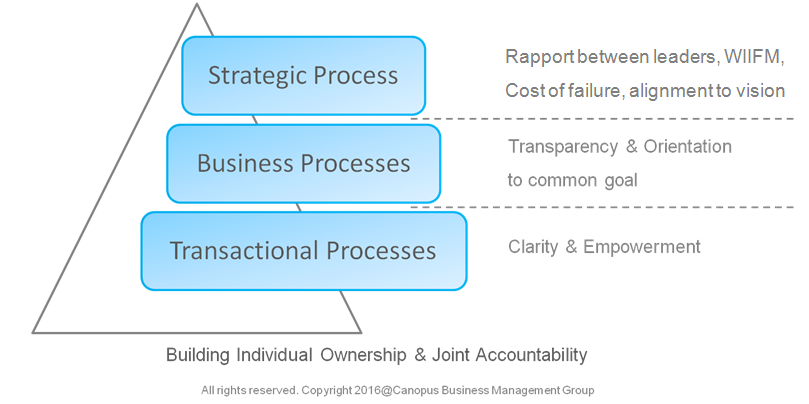
A Go-To-Market strategy is a plan for how you will bring your products or services to market and reach your target customers. It includes elements such as product positioning, target market, distribution channels, sales and marketing tactics, and key performance indicators.
A good GTM can directly improve the chances of the overall company’s business growth rate.
Here are some steps you can take to create a GTM strategy for your company:
- Understand your target market: It’s essential to have a clear understanding of your target customers, including their needs, pain points, and buying habits. This information can help you to identify the most effective ways to reach and engage with them.
- Define your product positioning: This is how you want your product or service to be perceived by your target customers. It should be based on your understanding of your target market and should take into account your competitive landscape.
- Identify distribution channels: Determine which channels will be most effective for reaching your target customers. This could include online and offline channels, such as e-commerce, retail stores, and direct sales.
- Develop a sales and marketing plan: Once you have a clear understanding of your target market, product positioning, and distribution channels, you can develop a sales and marketing plan that includes tactics such as advertising, public relations, content marketing, and events.
- Set key performance indicators (KPIs): These are metrics that you can use to measure the success of your GTM strategy. Examples of KPIs could include website traffic, number of leads generated, sales, and customer retention.
- Continuously Monitor and Optimize: Once your GTM strategy is in place, it’s important to continuously monitor and optimize it based on the data and feedback you receive. This will help you to adapt to changes in your market and customer needs and fine-tune your approach.
It’s worth noting that creating a GTM strategy is an iterative process. You may need to adjust and refine your strategy as you learn more about your target market and customers, or as the market changes. And also, these steps are general guidelines and the actual steps you need to take might be different based on the specific situation of your company.
#nilakantasrinivasan-j #canopus-business-management-group #B2B-client-centric-growth #Business-growth

IT products and services sector is in the forefront of B2B CX revolution. We conducted an interview with Mr. Anand Prakash, VP – Quality, HCL Infosystems about evolving role of CX in IT sector and to share some of the industry best practices.
Mr. Prakash has over 3 decades of industry experience in HCL, Wipro, and Ericsson. He is an engineer from IIT Roorkee.
Neil:Why do you think in a country like India, very price conscious base, Customer Experience (CX) matters?
Anand: CX is about having a better understanding of your clients and delivering a good experience. In IT sector, clients want you to be faster, cheaper and deliver the right quality. One attribute cannot be replaced the other. For example, price cannot replace quality. So delivering at the right price is also part of good CX. That’s how I see the role of CX.
So I wish to reiterate that even in a country like India with a price conscious base, CX is mandatory and cannot be taken for granted.
Neil: Is CX tangible? How does IT sector measure CX?
Anand: Usually “experience”, “satisfaction”, “loyalty”, etc. is assumed to be intangibles though we can assess them through customer surveys. That’s why today many organizations are looking at metrics such as Customer Effort, Customer Productivity, etc. These metrics are also like NPS and C-SAT, they measure the goodness or quality of the experience of the customers; still not tangible to business.
That’s why what we are doing is to link these metrics to business metrics such as Net Add(new orders from existing client that increases our share of wallet), Customer Attrition and Referencibility Index (% of existing customers willing to be our references). All these are metrics make CX very tangible and a pure business driver. Many leading IT organizations are also following similar practice.
Neil: What do you think are the biggest bottlenecks companies in IT sector face when it comes to CX?
Anand: Right from the beginning, IT sector is obsessed with technology. For example, when I started my career we used to worry about whether the computer had 8086, 80186, 80286, 80386, or 80486 microprocessor. We never thought if customer needs the power of higher processor. Similarly today we talk about open source technology, .Net, Java, etc. This kind of over obsession with technology is the biggest bottleneck for CX.
IT is fundamentally an enabler, say like electricity. Electricity is not directly consumed by consumer, but instead it is used to heat water or to cool the room. This is true for IT as well.
Knowledge of the domain which IT is enabling is weak among IT professionals. I see this as this as the next biggest bottleneck. For example, in a healthcare scenario, IT professionals should have good understanding of how a hospital works, what are the challenges faced of the doctors, para-medical professionals, etc.
Without understanding of customer’s environment and appreciation of user’s situation, IT professionals can never improve CX.
IT professionals should feel the real experience of the customer! And this happens only by understanding the Customer Journey. Take for example Redbus story. During Diwali, one of the co-founders wanted to celebrate the festival in his home town. Since he didn’t know his travel schedule in advance, travelling by bus was the only choice. He ran around town hunting for a ticket, but they were all sold out minutes before he reached the travel agents. Bengaluru traffic is notorious during festive season and can grip you at the wrong time. That’s exactly what happened that day. That’s when he thought of the possibility of providing bus travelers the convenience of booking a bus ticket over the internet. And Redbus was born!
Neil: What does an IT company need to do to foster a culture of CX?
Anand: IT professionals are much more vocal and demanding. Hence having a well articulated and defined process or policy to link CX improvement to the reward and recognition of individuals & team who have contributed is very important. WIIFM(What’s In It For Me) has to clear & transparent. For example, some projects have “Project Bonus” which is directly linked to the success of the project rather than the bundling it with year-end bonus.
To sum up I would say that instant gratification is the key in today’s scenario. Delayed appreciation is denied appreciation!
Neil: Can you share one example of good CX in IT sector that is worth sharing?
Anand: We are serving Medanta Hospital in Delhi. In order to deliver superior CX to our clients, we focus on understanding the patient and care takers journey, not just the doctors’ journey. Our IT delivery team has spent time to understand the hospital well. We have worked very closely with the hospital management. We designed the whole IT system around this understanding. So if IT organizations focus on end user experience, the overall experience will automatically improve. In this case it benefited doctors, management and patients. We designed IT systems that frees up time for doctors, which resulted in doctors spending more time with the patients!
Neil: Do you think any ‘One’ big idea can transform CX in IT sector? And if so what is it?
Anand: At the end of the day, an ‘experience’ is delivered by an individual and consumed by an Individual. There is a lot of human aspect to it. So how do we personalize the experience? How do we transform the experience?
Experience personalization can be achieved only through VOC and Digital Body Language. Digital body language is digital imprint/usage behavior of customers. By non-intrusive and passive methods this data can be captured and with the help of analytics personalization in CX can be created. You will see this more often in future.
Neil: What is the future for CX in IT sector?
Anand: In today’s world, technology is getting commoditized. Business outcomes are deeply linked to IT. Business leaders are now involved purchasing decisions with respective to IT products and services rather than just the CIOs.
Business leaders are inclined to use a lens of business success measures to evaluate IT. As a result, CX is emerging as a strategic differentiator as it will lift revenue growth, repurchase and referrals. Thus CX is moving from ‘good to have’ to ‘mandatory to have’ for IT sector.
IT organizations that recognize this shift and adapt will have a big strategic advantage over their competitors.
To more about where to start CX in your organization, you can discuss with me at neil@collaborat.com.
B2B companies are still in honeymoon when it comes to CX (Customer Experience). Whether or not you agree with me on this, it is certainly an equivocal ‘yes’ when it comes to B2B companies making CX a competition advantage.
B2B companies are lucky in a way that they deal with a reasonably finite set of customers unlike B2C companies. They don’t deal with the diversity of channel partners as in B2C, variety of customer profiles & temperaments, frequent changes to customer service policies, shorter shelf life products, high attrition of customer facing associates, etc.
But the odds against B2B companies are complex customer journeys, multiple stakeholders, outcome dependent on relationships, impacted by their customers’ processes, etc.
Today technology enables everything. But you will be surprised to know that the Single Biggest Bottleneck for B2B companies to deliver superior CX isn’t the availability of real time information, technology enablement, analytics capabilities, market intelligence, etc.
I’m associated with many companies in IT, ITES, OEMs, commercial financial services, infra, pharma, industrial products, etc. One thing that comes out clearly when we talk about improving CX is “Lack of Ownership”
Here are the top 5 issues that come in no specific order:
- No ownership of outcomes for end-to-end process
- Lack of coordinated effort
- Passing on responsibilities rather than being accountable to clients
- Silo mentality (more focused on self-KRIs)
- Cohesiveness & coordination issues
So it is something internal and well within the reach of any organization to accomplish. If there is one thing that B2B companies need to do to improvement CX, then it is to find out ways to build what I call as ‘Individual Ownership and Joint Accountability” (IOJA).
Let’s examine the real reasons for this issue:
Too many priorities:
This is probably one of the most abused phrases. But the catch is in deselecting what is not important rather than selecting what is important. Of course, everything we do is certainly important, but is it urgent enough and that too right now. Our inability to deselect is an inhibitor for creating ownership.
Conflicting priorities:
Functions exists to help the clients. Unfortunately, they have become an object of power & strength. Stone walls built around functional boundaries prevent smooth flow of information and ownership. Conflicting functional strategies and disgraceful loyalty to their functions play spoilers.
Ownership for failures:
Let me be very open about this. A way to wade off failures is by keeping the ownership fairly broad and undefined; And all of us do it.
Missing sense of value:
When I have no idea how the data I’m entering in the bid management system will help the company gain deal, I rather fulfill what I have been instructed rather than go beyond the defined boundaries to win the bid. Think why this month’s shining entrepreneur was a dumb seat warmer last month when employed. It’s all about a sense of value from what we do.
Your process, your client’s process & their client’s process:
Working with clients means that B2B companies have to work through client’s processes too. This makes it doubly difficult to comply with your processes as well as client’s. On a separate note, processes both at our end and client’s end are created to help someone, may be ultimate user client or consumer. Two decades ago we were driving people to talk the language of process and live by it. But now we realize that the same process mindset is a culprit when it comes to delivering superior CX. People not only find excuses in the name of process but are genuinely bound to comply and thus knowingly create unhappy clients!
This list is bottomless, so I’m going to stop here and talk about what we can do to build “Individual Ownership and Joint Accountability”.
What is IOJA?
Here’s a simple example to define IOJA. Your 4 year old kid goes to a play school. One fine day she may injure herself. Who owns this failure? Is it you or the school? You handed over the kid to the school and so it’s the school’s problem and you don’t have to worry because this injury didn’t happen under your supervision! In fact, you will let the kid know that the school teacher is responsible for her injury and you could have done nothing to prevent it. Right:-)
As a parent we know that whether the kid is in our sight or not, we retain the Accountability for her well being, at all times. And the school should (ideally) know that they have to take the Ownership for the well being of the kid in their supervision. That’s what we mean by Individual Ownership and Joint Accountability.
Functional leaders in an organization should have joint accountability though individual ownership might reside with one function. It’s like a game of football or any other sport, where one player compensates for the pitfalls or misses of his/her team member rather than pointing fingers in the play ground. Of course they might huddle it out off the ground but in that moment they play by what is right for the team as a whole and how they can individually contribute and cope for the loss. Huddling is out off the ground is what we call as “Catch-Ball” technique. There are a variety of tools that can enable IOJA.
Building a culture of IOJA
Organizations can end up preaching this concept with no results. I’d rather work on systematic approach to build IOJA rather than work on just behaviors.
In designing an approach for IOJA, we have to appreciate that strategic processes, business processes and transactional processes are different and needs different treatments. At transactional level it might be clarification & empowerment that matters. At business processes level it will be transparency and orientation towards common objective but at the level of strategic processes, it’s more of relationship between leaders, attitude towards the vision, WIIFM and cost of failure.
If you plan well, ownership issue can be systematically addressed to build a culture of superior CX in B2B setting.
To more about how ownership issues can be addressed in your organization, you can contact me at neil@collaborat.com
What are innovative examples of customer relationship management (CRM)?
If the question is specifically to do with data transparency, I think we have examples all around us.
Starting from Blue Dart, FedEx, Amazon to Banks & financial institutions, all of them are providing access to information readily to their customers.
Self-Service is the way to go if the idea is to give customer independence. The biggest bottlneck now is disparate technology platforms that companies have acquired for their different channels/touch points. That’s the reason Omni-Channel is gaining importance.
But really, I feel that Customer Relationship Management goes much beyond data transparency and making customers really understand how their data is used.
Innovation is Customer Relationship Management is Personalization, Enhancing Customer Productivity, Proactive need fulfillment & assistance, seamless integration with Customer’s lifestyle, building emotional value rather than mere functional value, etc.,
With large Customer base, Organizations don’t know what are the sentiments of customers. Hence gaging it through anonymous surveys will help to estimate loyalty. With smaller group of 100 or less, I assume your sales and service folks already know the reality. Using measures such as share of wallet, repurchase, intent to recommend will be a better way to estimate loyalty. What’s important is to gain insights about how to increase loyalty. That’s much easy with smaller base. An interview or ethnographic study will help.
Customer Experience: How do the products and services you buy, waste your time, even if they ultimately give you benefit?
Customer Effort is becoming a key factor in the decision making!
The question that Customers are increasing asking is, does the service channel enable faster end-to-end hands-on time for the me to complete the desired tasks? Complex navigation, improper placement, etc consume high end-to-end time. Customer Productivity is a good way to look at this problem.
What are best practices in terms of customer satisfaction analysis for IT services?
Most organizations in IT conduct Customer Satisfaction Surveys. So that is the first and simplest of all best practices in that sector wrt C-Sat.
Using NPS is also a common practice.
Some of the best organizations, perform exploratory and predictive analysis to do the following:
- Identify which factors impact Overall Satisfaction
- Are there specific patterns in the satisfaction such as Time Period, Service, Team, etc
- Establish the Key Drivers for Overall Satisfaction at Project Execution Level
- Build a model to predict the Overall Satisfaction
We have conducted many such studies across product and services organizations in IT sector.
Sign-up for collaborat newsletter

